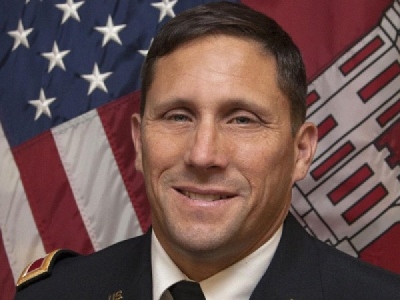
Posted on June 12, 2018
By Brian Todd, Post Bulletin
The city of Wabasha and the U.S. Army Corps of Engineers signed a memorandum of understanding Tuesday to work together to find a mutually beneficial answer to the issue of how to dispose of dredge material from the Mississippi River.
The St. Paul District of the Corps pulls about 250,000 cubic yards of silt and sand annually from the river to keep open the 9-foot navigation channel. In May 2017, the district’s 40-year dredge material management plan was met with significant opposition from area landowners, the city and county of Wabasha, and their counterparts in Wisconsin.
The agreement signed Tuesday said the Corps and city of Wabasha, which spearheaded the fight against that 2017 Corps plan, will work together to “find a way to dispose of the sand permanently in a way that works for you and works for us,” said Col. Sam Calkins, commander of the St. Paul District of the USACE.
“What this memorandum commits us all to is working in good faith,” Calkins said.
A long fight
That’s a far cry from where the Corps stood a year ago.
Willard Drysdale, whose farm north of Kellogg was slated to be one of the main dumping sites for sand for the next 40 years, said the agreement signed Tuesday was one of many steps the Corps has taken to gain his trust after initially threatening to take a huge chunk of his farm.
“I think this is a workable thing for everybody concerned,” Drysdale said.
Today, he considers the Corps a partner in this process with the city and county, but it was an uphill battle against a powerful arm of the federal government, and getting the Corps to change its mind was a huge undertaking.
Drysdale said he never thought of giving up.
“My family and I, we couldn’t accept that approach,” he said. “From the first day, we said we have to do everything we can to get that changed. We knew in our minds it wasn’t right, and we thought it could be stopped.”
Lessons learned
The memorandum says that in addition to working together, the city and Corps will develop a barge port terminal for the city and find locations to place the dredged material that are agreeable to both entities.
Financially, the Corps will pay up to the cost it would have incurred under the old plan for transporting and storing dredge material. The remaining cost, if any, will be made up by the city or private entities that benefit from the sand.
“The bottom line for the city is we want to work with the Corps to develop a win-win solution,” said Daniel Marks, attorney for the city.
Calkins said keeping the concerns of the cities along the river and how the Corps’ work impacts those towns has become more important to their process. This experience has shown the Corps in St. Paul it must communicate with communities while developing dredge material management plans.
“This is absolutely informing the way we deal with other towns,” Calkins said. “If we lose sight of the small towns like Wabasha, then we’re not doing our job. That’s why we’re talking about this memorandum of understanding.”
A new plan
The Corps expects to release a new dredge material management plan for Lower Pool 4 – that section of the Mississippi River from the Chippewa River to Lock and Dam 4 – in either September or October, Calkins said.
That plan will take some time, not only to work out the details with the city, but to gain approval from the Corps’ headquarters, which will review the plan going forward.
What that new plan will not include is use of Drysdale’s farm or the Southside Fitzgerald site along River Drive South that upset so many Wabasha residents.
Calkins told a woman during Tuesday’s meeting that, going forward, she can rest easy. “I hope we’re not causing you stress anymore because you shouldn’t feel that,” he said. “We’re not going to use the Southside Fitzgerald site.”
Source: Post Bulletin





